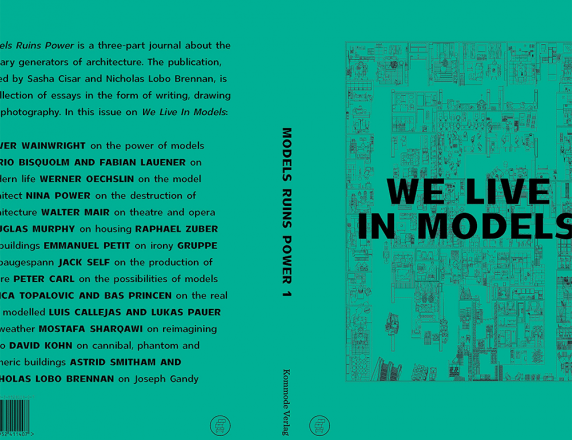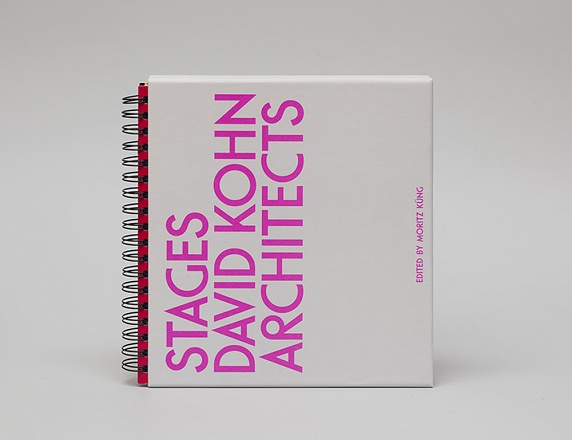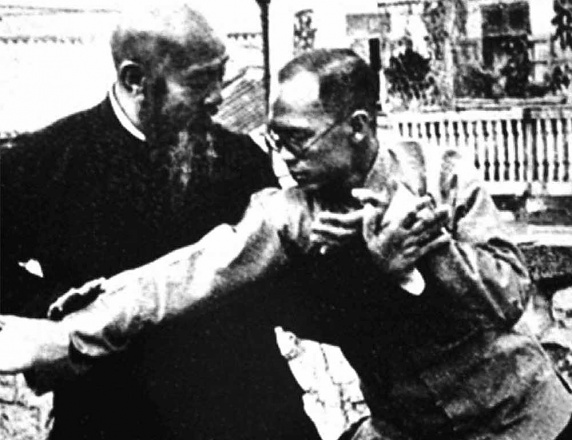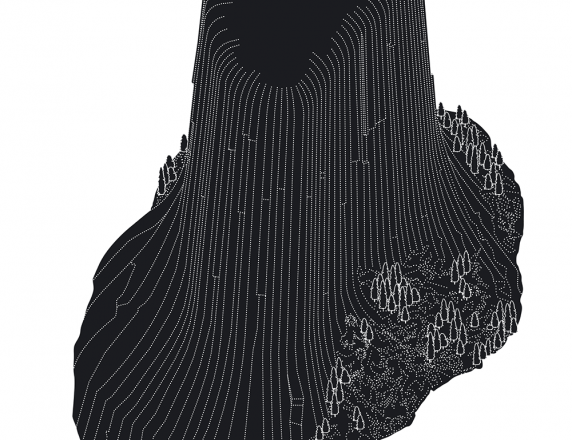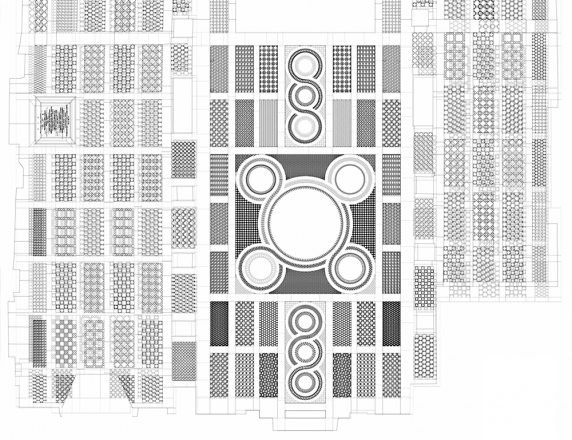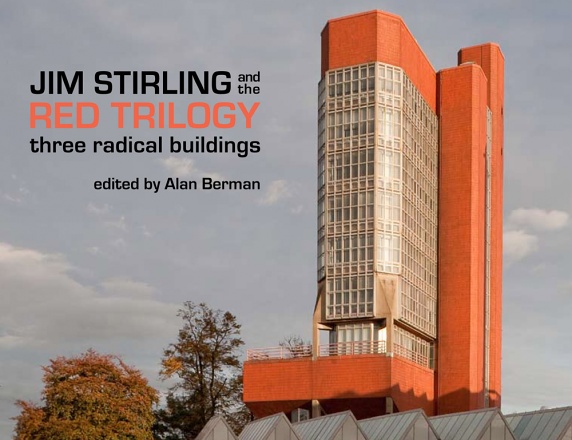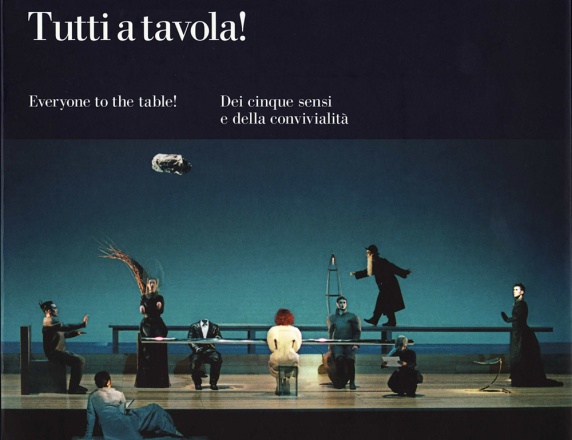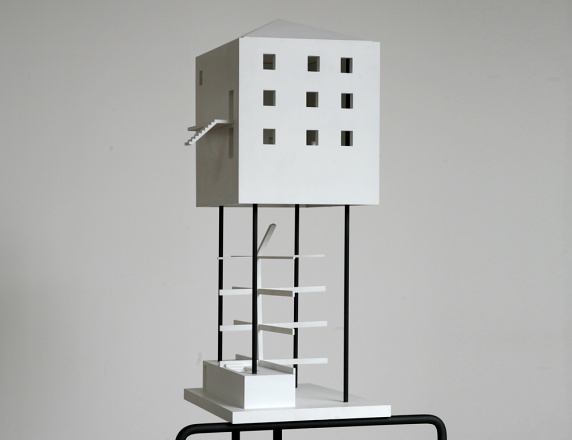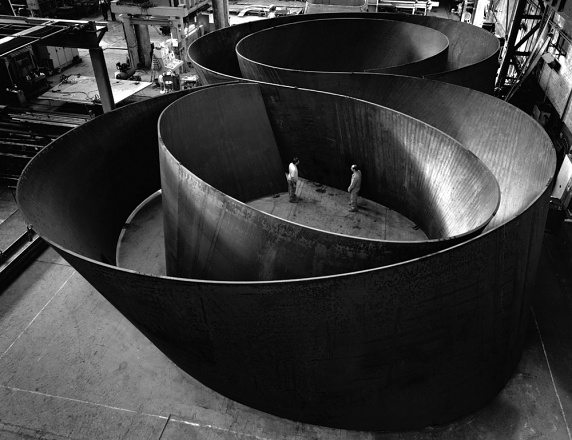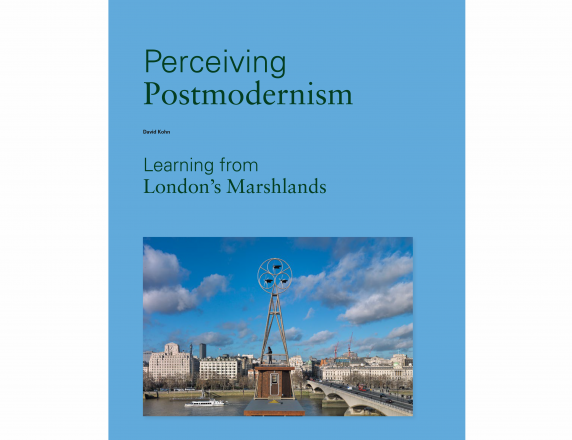Five short stories published to accompany an exhibition, Unfeasible, at Walter Knoll, 3rd - 30th September 2015.
Facsimile Buildings. The fourth and final architect entered the room, followed by six young men carrying an enormous model on a stretcher. ‘Your Highness,’ I announced, ‘the final presentation, by the architect Dorothy Equinox.’ The day had been spent reviewing designs by several of the world’s leading architects for the new Royal Palace. My role, as master of ceremonies, was to ensure that the presentations kept to their allotted times and that the changeovers went smoothly: ”Miss Equinox, you have half an hour to present your proposal to his Highness.” There followed a fair amount of shuffling as the stretcher was manoeuvred before the King’s entourage. The model really was magnificent, a wedding-cake-like confection of high bluffs, colonnades and caryatids. The King shifted his weight to the front of his throne and, after a moment’s pause, addressed the model. “Miss Equinox. Am I not correct in recognising your model as being of the Acropolis?” With a perceptible relaxation in posture Miss Equinox replied: “Yes, your Highness, it is. I am delighted that you recognise its design.” The King ‘s brow furrowed as he stroked his moustache. “But I do not want a copy of another civilisation’s great architecture. I want something new, something that sets my kingdom apart from others, that demonstrates my commitment to the arts and our country’s progressive outlook. You cannot seriously be proposing that we build a copy of the Acropolis.” Miss Equinox surveyed the room as though gauging her audience before replying, “Great King, this would be no ordinary copy. Rather, I am proposing an undertaking of such extraordinary profundity and consequence as to astound all those who hear of it. Your Acropolis will not be a copy of the original, it will be the Acropolis itself. I propose that you do not use machines to cut the columns but that you create crafts’ guilds with the knowledge to carve stone, that you do not import stone but that you find new quarries and build roads to service them. For every broken stone in the former Acropolis you will enact an event that leaves the same result in your Acropolis. In short, you shall create a society capable of making an Acropolis, a perfect facsimile.”
Mirrored Buildings. Last year we finally made it to Anobidis. We arranged to stay with friends in the north of the city for a couple of days before moving to the south for the rest of the week. For the most part, people in the north live in free-standing villas surrounded by generous gardens. The predominant architectural style is Classicism and nearly all the villas have symmetrical porticos, wings and rooflines. We discovered that it is fashionable to keep certain parts of one’s house under lock and key, opening them only to impress guests on special occasions. These areas are usually the most lavishly decorated in the house, finished in bright materials, filled with statuary and punctuated by courtyard gardens. To offer a guest a key to the locked rooms and invite her to explore at her leisure after dinner is considered the height of hospitality. In the south of the city, by contrast, people live in apartments a fraction of the size of their northerly neighbours’. The apartment blocks are generally built over generations and have the appearance of Gothic manor houses, having been added to and adjusted endlessly. An unexpected characteristic of the apartment blocks’ interior architecture was the prodigious use of black mirrors. The mirrors are built into the architecture, filling doorways, niches, portions of walls and ceilings (or perhaps it is the other way around, the architecture is built around the mirrors). The effect is to make one unsure where the real world stops and the mysterious world of the mirrors begin. When we told our hosts, over dinner, of the lavish houses we had visited in the North, they rolled about laughing. “Lavish?” they scoffed, “Why, all those hidden rooms and rituals are a poor man’s attempt to recreate the magical spaces created by a black mirror, the most sought after and expensive commodity in Anobidis.”
Cannibal Buildings. Down the road a new housing block was going up. It stood on the site of a previous development from the 1980s which was in bad condition, more because it had not been looked after than because it was poorly constructed. When the council decided to knock it down there was a local outcry: how could so many buildings only thirty years old be of so little value so soon? Besides, the 1980s housing was an extension of a much larger estate, so if the extension was ripe for demolition, what about the rest? Residents had come to love the honey-coloured concrete terraces, walkways and party walls. During consultation about the new designs there was consternation and a heated debate about what could be retained of the old scheme. Surely it had some virtues? The contractor was on hand to field just such a question: the honey-coloured concrete, he said, would be crushed and re-used in the new construction. This was not what local residents were expecting. There was much muttering as people took in the thought and asked themselves if this was a good or bad thing. Today, you can walk past the development and see flecks of colour in the low concrete walls surrounding the site; it’s as though the new building has drawn strength from the life-blood of its predecessor. The new walls are a watered-down version of the old walls across the road in the large estate. For those in the know it is comforting and troubling in equal measure to know that the new building cannabalised the old one.
Chimeric Buildings. Next to the cathedral, by Mitropolis Square, is a small, cube-shaped church known as the Little Cathedral. Legend has it (our tour guide explained), that the church was founded in the eighth century by Eirene of Athens, Empress of Byzantium. Eirene (she continued) was the wife of Leo IV and mother of Constantine VI. Both men oversaw the widespread destruction of images in churches. Eirene, on the other hand, venerated icons. During her her five year reign, the policy was reversed and the production of images resumed. Women, we were told, played a disproportionate role in resisting iconoclasm. Eirene, however, was eventually banished to the island of Lesbos where she soon died. So it was fitting that the Little Cathedral is built of marble blocks covered with images of lions, peacocks, doves, flowers, sphinxes, geometric figures, and the tree of life. The images are incongruous, from different cultures, carved by different hands and on different types of marble. My son: ‘Why is this building made of other buildings?’
Phantom Buildings. The structural engineer called to tell Mahalia that her fees were now used up and that, if the design were to change any more, they would have to go back to the client, cap in hand. Mahalia thought about the last time the matter of additional fees was raised with the client and sighed. The design of the structure really would have to be frozen at this point. She flicked through the plans on her desk and tracked across a building section on her screen and felt a growing panic. As a building it made sense, she thought, but it this was not where she had imagined the overall design to be heading. If this was not be a sublime construction, what was the point? So began a brief period of mourning for a still-born building. A compromise was needed, so Mahalia reviewed the drawings once more and phoned the engineer to say the building on the drawing board was fine, it was good to go, there was no need to revise the design. But the building as it stood would naturaly need to be adapted. The engineer was perplexed: if the design was fine, what was to be adapted? Mahalia explained that she would treat the current design as a completed house and that she would already start working on the extensions. The client need never know about the phantom house crouched within the final construction.
Cannibal Buildings, Phantom Buildings and Chimeric Buildings - were previously published in We Live in Models, 2014
